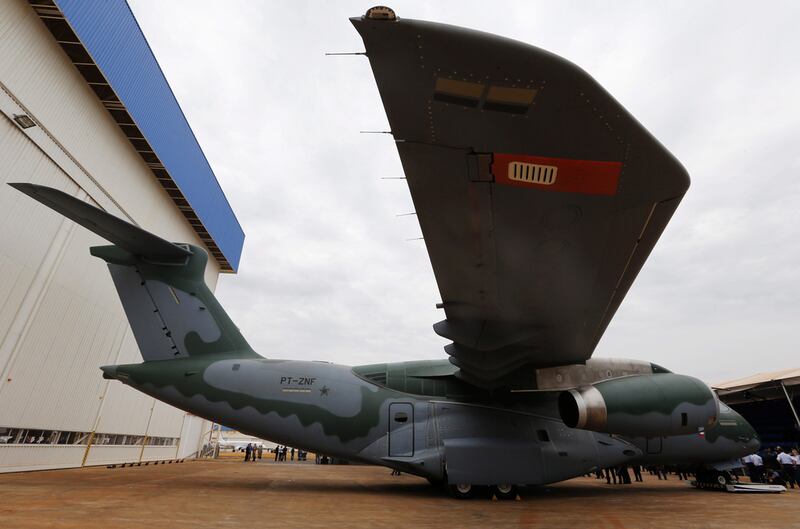The Brazilian aircraft maker Embraer will try to get a foothold in the Middle East's tactical air transport sector at Idex this week, looking for the first major regional order for its new KC-390, which competes with Lockheed's famous C-130 Hercules class.
The sector covers the huge aircraft that can transport not only a special forces detachment – the KC-390 carries up to 80 people – but also their light armoured vehicles and other equipment.
Embraer has been marketing the aircraft aggressively – “the advanced and modern option to replace legacy medium-lift aircraft”, its literature says, in reference to the C-130 and other rivals – and has secured an order from the Brazilian Air Force.
Competition is tough. In December, it lost out on a C$2.4 billion (Dh6.73bn) order to supply 16 aircraft to the Canadian air force’s search and rescue branch, which was won by Airbus with its C295W, which was apparently a much cheaper option (slightly over half the unit cost of the KC-390, at about US$28 million each, with lower fuel and running costs too, according to industry press reports).
But others also lost out, including Canada’s own Bombardier Q400, as well as the C-130J, the new Hercules model, Alenia’s C-27J Spartan and Viking Air’s DHC-5NG.
Embraer is in the running for New Zealand’s air force, having responded to its request for information, and there is a chance in the UAE, which has a need for up to 12 aircraft to replace ageing C-130s and to expand the fleet, according to IHS Jane’s, which tracks and analyses global military developments.
Jackson Schneider, the chief executive of Embraer Defense & Security, said the company tested the KC-390 for the UAE Air Force under demanding desert conditions, in part to answer critics who have suggested that its turbojet engines are more vulnerable to rough flying and landing conditions than turboprop craft, which includes the C-130J.
“We had the opportunity in the middle of last year to do a debut tour in the region, specifically in Abu Dhabi where the plane flew in very strategic conditions,” said Mr Schneider. “We performed a very severe test and it was successful, even exceeded some of the parameters.”
He also noted that the KC-390 had to perform in jungle conditions in the Amazon to win its domestic Brazilian air force order, also had to demonstrate effectiveness in the Antarctic, where the Brazilian air force also expects to use the craft.
The Brazilian order in 2014, which was for 24 planes plus a logistical support package, spare parts and maintenance, was for a total of about $3bn. But Mr Schneider said the competition is never on unit price alone but includes the specific needs of the service.
Embraer says it expects KC-390’s initial operational capability declaration in the second half of 2017 and the certification of the final operational capability in the second half of 2018, after which it can commence deliveries. In terms of its operational qualities, it flies higher, faster and further than its rivals and can carry up to 26,000 tonnes, which puts it at the top end of its category.
__________________________________
Idex 2017
■ Mena defence spending to rise this year as conflicts create demand for arms
■ UAE will count on technologies to keep terror threats at bay
■ South African defence firm targets region with military variant of light aircraft
■ Bell Helicopter eyes Gulf deals
■ Preparation for Idex under way in Abu Dhabi - in pictures
__________________________________
amcauley@thenational.ae
Follow The National's Business section on Twitter





